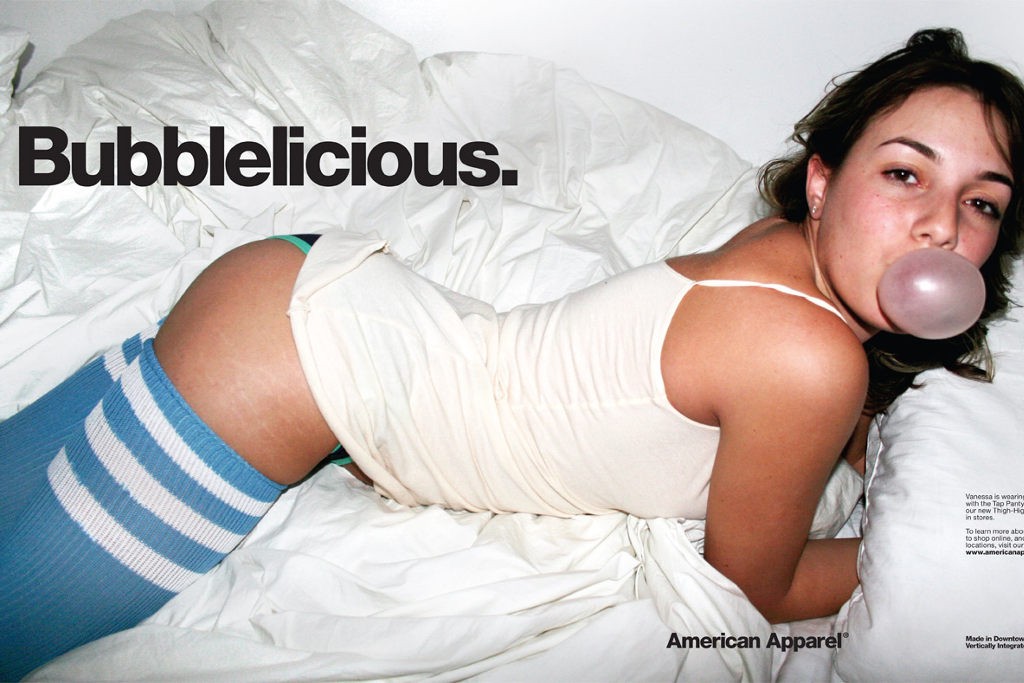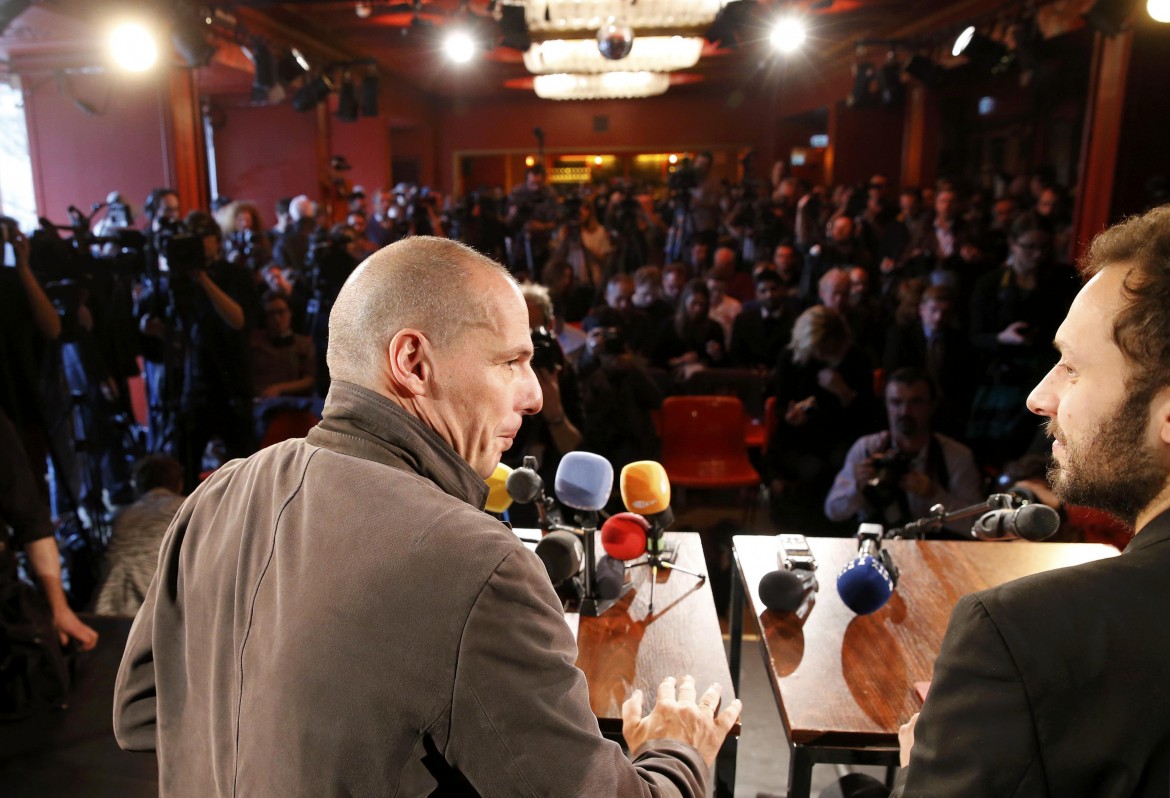The delisting of American Apparel from the New York stock exchange last week was the last indignity suffered by a once high-flying company. Led by its brash CEO Dov Charney, American Apparel had scaled the heights of the garment retail business with an irreverent attitude that captured the imagination of a young customer base.
In a business where image is everything, Charney, the scion of a Montreal retail dynasty, blazed a trail as iconoclast entrepreneur and established his brand as possibly the hippest label of the ‘90s and 2000s.

With the swagger of a Steve Jobs reimagined by Quentin Tarantino, and the stated ambition to redefine American capitalism, no less, Charney built a vertically integrated company with hundreds of stores and thousands of employees. And, in contrast to companies that shun controversy in the name of wide commercial appeal, Charney appeared to revel in it, infusing the brand with “value added ideology” in a more radical way than Apple ever did. The brand proudly proclaimed that it was “Made in Downtown L.A.” and “sweatshop free,” in open polemic with an industry which notoriously depends on outsourcing and systematic exploitation of underpaid workers.


Charney could survey his hipster neocapitalist domain from his fortress-like mansion overlooking Silverlake, an outpost on the incipient gentrification of Los Angeles’ “hipside” and the coming age of millennials of which he would be putative magnate.
Perfectly placed to exploit the coming cultural shift, American Apparel was a pioneer as well of L.A.’s Downtown revitalization.
The company moved into a massive seven-story ex-railroad plant, which it converted to one of the country’s largest garment manufacturing plants. At its height, more than 3,000 workers labored over industrial machines in the vast concrete open floorplans, churning out knits, T-shirts and the other items in the company’s utilitarian inventory.
Pursuant to his creed of “radical capitalism,” Charney vertically integrated his company in stark contrast to the outsourcing that dominates an industry notorious for the abuse of its workers in local sweatshops as well as globally.
[do action=”citazione”]Slogans hung in giant letters from the company’s factory like California Dazibaos: “AA is a Rebel company” and “Legalize L.A.”[/do]
When I visited the plant in 2004, slogans hung in giant letters from the company’s factory like California Dazibaos: “AA is a Rebel company” and “Legalize L.A.,” a reference to both illegal immigrants and gay marriage.
Like the ideological posters used to articulate maoist ideology, these were the tenets of Charney’s own “cultural” revolution.
His main fight was against impediments to immigration, which he saw as artificial barriers to productivity and to the progress of mankind. He railed against them as he walked me through the factory floors where hundreds of latino workers labored, many admittedly without work permits.

[do action=”citazione”]“I’m an American imperialist. I believe in life, liberty and pursuit of happiness for all: No borders! Everyone should have equal protection, including prisoners in Guantanamo!” — former American Apparel CEO Dov Charney[/do]
“Third-world labor is a cop-out. I will do it if necessary, but I will pay full American wages. I’m an American imperialist. I believe in life, liberty and pursuit of happiness for all: No borders! Everyone should have equal protection, including prisoners in Guantanamo!” he said.
Charney-speak was a heady blend of social justice, free market and counterculture parlance. The sideburned impresario would free-associate free market economics, extreme libertarianism and elements of egalitarianism and genuinely relish the rabble rousing. “I use socialist elements in my capitalism,” he would exclaim. “This is better capitalism. Exploit human potential, not human beings.” As he excitedly expounded he would occasionally stop in his tracks, raise his arms and let out earsplitting shouts, immediately answered by the department workers, in a stadium-like eruption of yelling.
[do action=”citazione”]“I use socialist elements in my capitalism. This is better capitalism. Exploit human potential, not human beings.” — former American Apparel CEO Dov Charney[/do]
Charney also was opposed to unions — not the first American magnate to labor under the illusion that in his groundbreaking company the bond between capitalist and workers would be spontaneously harmonious. In this, his attitude of benevolent paternalism resembled another California native who ended up severely misjudging unions: Walt Disney.
In those days American Apparel chartered buses would drive workers to May Day celebrations and especially during the immigration rights movement of 2003, the AA contingents with their colored T-shirts and disciplined marches were a common sight among the oceanic crowds of Hispanic protesters.
“I believe in migration as a way to advance society,” he stated. “Because the U.S. doesn’t have a proper immigration policy, most industrial workers are falsely documented. The government knows it, (former homeland security chief) Tom Ridge knows it and the IRS knows it!” Charney freely admitted his self interest in his advocacy, but the gratitude of the workers was nevertheless tangible and appeared genuine.
Charney wanted access to immigrant labor but insisted on paying them the “highest wages in the industry.” His payback would come, he believed, from higher motivation, productivity and the better efficiency of a model with locally integrated design, marketing distribution and manufacturing.
In 2008 American Apparel paid the price for its public insubordination, and it was the Obama Administration which forced it to fire 1,800 of its workers who couldn’t produce proper papers, as part of the deportation campaign enacted in a vain attempt to curry favor with immigration hard liners.

But it was the internal front that would ultimately prove his undoing against a backdrop of escalating legal troubles — including more than one sexual harassment suit brought against the lothario entrepreneur.
After the company went public, these were at the root of the deteriorating relationship between the maverick founder and the board of directors.
They would eventually lead to his firing in 2014 (another page out of a Jobs-like narrative). Meanwhile, beset by commercial woes and falling sales, the company hemorrhaged jobs and money. The chapter 11 bankruptcy filing finally came on the heels of months of contentious acrimony culminating in lawsuits pitting the company against its founder.
In the end it was the forces of his beloved free market, or maybe the fickle ones of the fashion retail industry, that would end up spelling the end of one of the most singular figures in new American capitalism.







